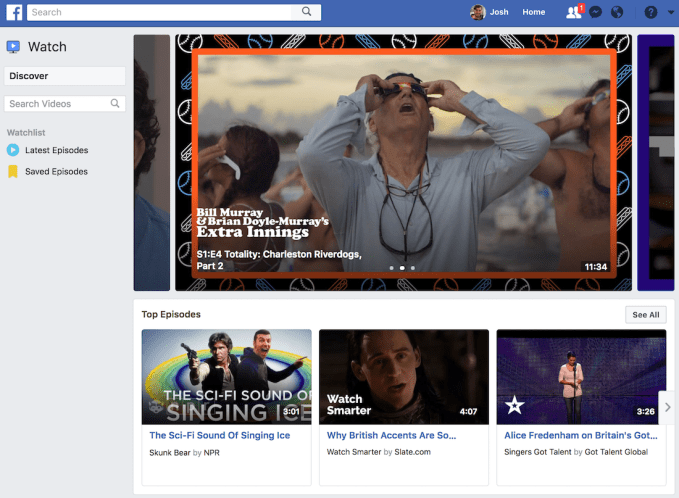Everyone’s least favorite ads are coming to Facebook, but six-second pre-rolls will only appear on original Watch tab videos you purposefully view and not in the News Feed. Facebook is embracing pre-rolls after years of shunning them as it tries to make payouts to video creators sustainable. Facebook’s head of video Fidji Simo tells TechCrunch that it will not renew direct subsidies to Live News Feed video broadcasters, confirming a Digiday report about it halting payments that included $50 million in contracts for 140 publishers and celebrities.
“A lot of the deals … were always meant to be temporary,” says Simo. “We have been funding content for a while. We thought we’d launch a new type of format, and we tried to help publishers learn how to make that content work.” Facebook has a new set of deals to pay upfront for Watch shows, and that includes some recurring Live shows. But when asked if Live payments that funded content like BuzzFeed’s watermelon rubber band broadcast would be allowed to run out by early next year and not be renewed, Simo said “yes.”

Instead, Facebook will encourage Live News Feed video broadcasters to use branded content sponsorships and mid-roll ads. But videos must now be at least three minutes long to qualify and put the ad break at least one minute in, as opposed to the old rules that required videos to be at least 90 seconds with the mid-roll at least 20 seconds in.
On a more positive note, Facebook will be upranking the News Feed presence of Watch original video shows that get consistent viewership, and it will display Shows in News Feed to users who follow the Show’s creator’s Page even if they haven’t viewed or subscribed to the Show itself yet. That could help Facebook develop a few flagship Shows, as nothing has quite broken out of the crowd of low quality, often unscripted content in Watch. Facebook has said it plans to fund fewer Shows with bigger budgets in the future.
Who wins and loses
Facebook is trying to balance the delicate relationship between users, content publishers, advertisers and itself. The addition of pre-roll ads should delight publishers who want to ensure they get paid for their content even if users bail after a minute. It gives advertisers more flexibility, and could earn Facebook a boatload of money if Watch shows become popular.
For the user, pre-roll ads will surely be annoying, but if someone purposefully goes to the Watch tab to view a specific video series, having to endure an ad feels pretty standard. Facebook would be smart to keep pre-rolls out of the News Feed where people serendipitously discover videos, but where having to view an ad first would ruin the breezy scrolling experience.

The big losers here, though, are the publishers who took Facebook’s Live and on-demand News Feed video subsidies, built up big teams of staffers to produce the expensive content and are now being shooed toward other monetization options that might not be mature enough to pay the bills. Before, these publishers just had to make entertaining video, and Facebook paid. Now, those videos must jam in sponsored content, or hold people’s attention for at least a minute before they can show an ad break. We could see video staff layoffs at publishers as a result.
It’s a symptom of a larger news industry crisis, where publishers struggling to compensate for dropping display ad rates a few years ago were eager to suckle on added referral traffic from Facebook’s News Feed. But as I’ve written, publishers have become dumb content in Facebook’s smart pipes, reduced to ghostwriters Facebook can easily swap out. Publishers should have been concentrating on building an owned audience on their sites and email lists instead of becoming dependent on Facebook’s fickle mediated channel.
Now Facebook is changing its video strategy from subsidizing News Feed videos more fit for journalism to longer, dramatic Watch Videos, while promoting more user-generated content from friends instead of articles from news outlets. Without the same massive team and profits, publishers may not be agile enough to gracefully adjust. And that’s why when Facebook dangles its next gift of virality, publishers should stay skeptical and focus on their long-term strategy rather than jumping through the new hoop.
For more on this problem, check out my rant video below:
[tc_aol_on code=”519169123″]






























Comment